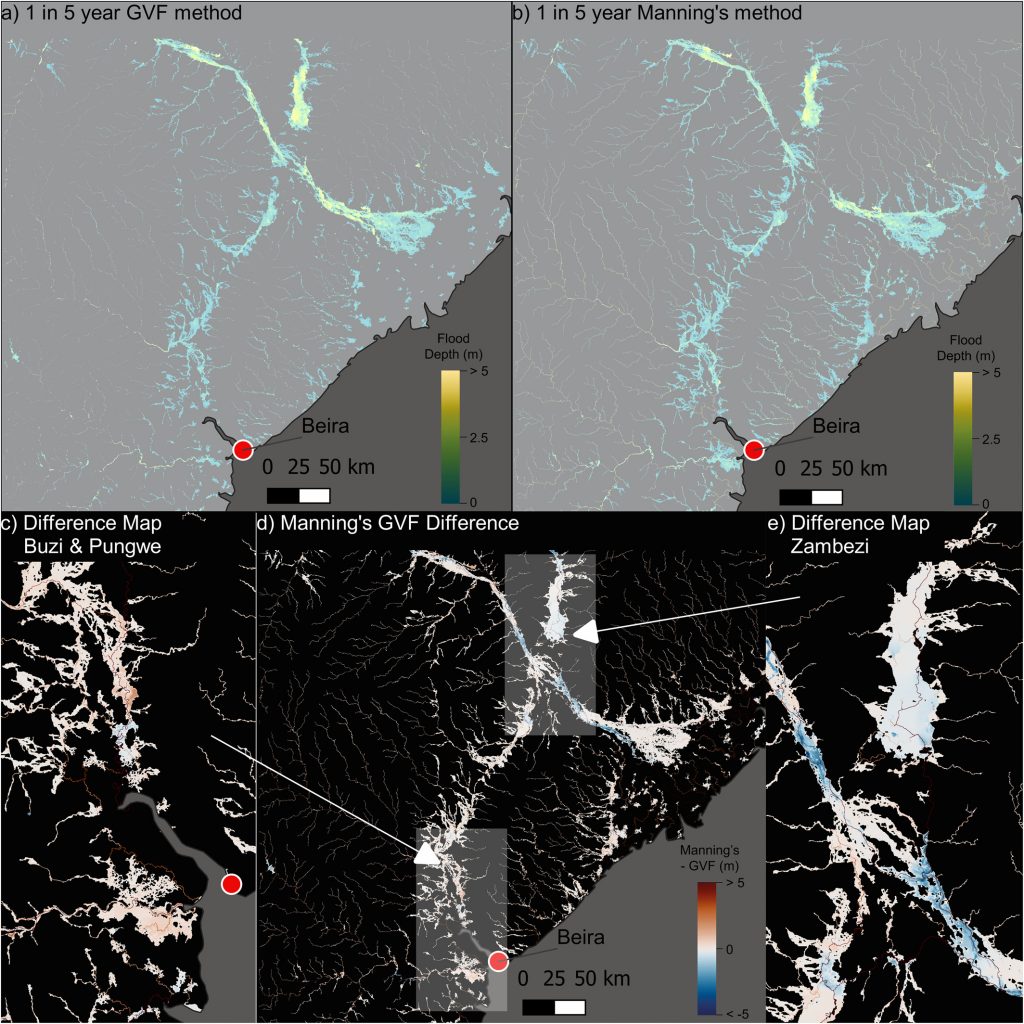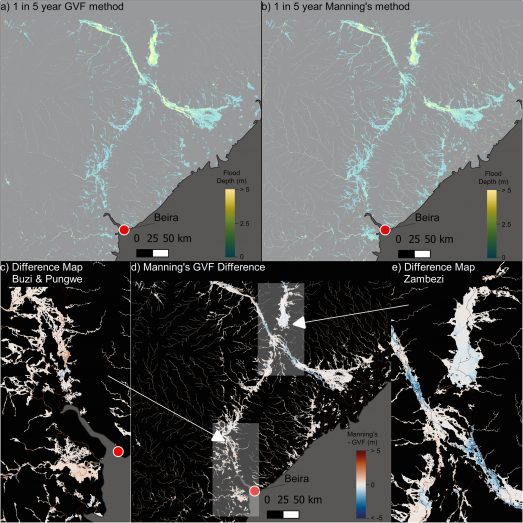
An overview of Fathom’s recently published research
As part of Fathom’s commitment to the academic community, our Chief Research Officer defined an ambitious strategy for published research at the start of 2021.
Since then, our technical team have worked hard to uphold this and have collaborated with a number of research partners to produce numerous peer-reviewed papers that have recently been published. These cover a wide range of topics investigating flood models and their application within industry.
In this article, we provide a summary of our most recent research and information on where you can access them.
Attributable human-induced changes in the magnitude of flooding in the Houston, Texas region during Hurricane Harvey
May 19th, 2021
Using Fathom’s US flood model to examine how climate change exacerbated the impact of Hurricane Harvey, which devastated Houston in 2017.
Wehner, M., Sampson, C.
Environmental Impact Bonds: a common framework and looking ahead
July 27th, 2021
Environment Impact Bonds (EIBs) are in their infancy, yet are increasingly recognised as a funding solution to tackle the world’s most pressing environmental challenges. Our contribution, alongside colleagues at The Nature Conservancy, discusses how recent developments to flood models at scale can help to inform both the principal and the repayment interest rate for flood mitigation projects, such as floodplain conservation.
Brand, M., Quesnel, K., Saksa, P., Ulibarri, N., Bomblies, A., Mandle, L., Allaire, M., Wing, O., Tobin-de la Puente, J., Parker E.
An assessment of large-scale flood modelling based on LiDAR data
July 31st, 2021
In this paper, we collaborated with colleagues at the University of Concordia to demonstrate the value of bathymetry estimation in large scale model frameworks by testing across four watersheds in Quebec, Canada.
Choné, G., Biron, P., Buffin-Bélanger, T., Mazgareanu, I., Neal, J., Sampson, C.
Causes, impacts and patterns of disastrous river floods
August 10th, 2021
Paul Bates contributes to a significant review in Nature of the causes and impacts of disastrous river flooding, and their past and projected trends.
Merz, B., Blöschl, G., Vorogushyn, S., Dottori, F., Aerts, J., Bates, P., Bertola, M., Kemter, M., Kreibich, H., Lall, U., Macdonald, E.
Voluntary purchases and adverse selection in the market for flood insurance
August 14th, 2021
Insurance is mandatory for those residing in FEMA flood zones with a federally-backed mortgage. Less understood is what motivates people to voluntarily obtain flood insurance in areas outside these zones. In a wide-ranging analysis in collaboration with Jacob Bradt (Harvard) and Carolyn Kousky (Wharton), we find voluntary insurance purchases are preferentially taking place in areas where Fathom’s model deviates from FEMA flood maps. This implies that our model is correctly identifying places at risk which FEMA misses and that people have a pretty good understanding (or, at least, better than the NFIP) of their local flood risk, leading to ‘adverse selection’ in the programme.
Bradt, J., Kousky, C., Wing, O.
Want to collaborate with us?
If so, we’d love to hear from you. We are committed to working with other organisations and academics looking to progress our understanding in the field. You can get in touch by visiting our contact page.
Want to read more about our research?
For those interested, all of Fathom’s research is open access and can be found here.

